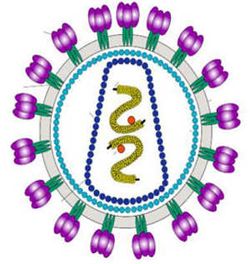The role of HPV and HIV in causing disease

The 2008 Nobel Prize was awarded for the discovery of new viruses responsible for fatal sexually transmitted illness in humans.
Harald zur Hausen discovered that human papilloma virus (HPV) is the cause of more than 80% of cervical cancers. This discovery led to the development of a vaccine for cervical cancer. Francoise Barré-Sinoussi and Luc Montagnier discovered the human immunodeficiency virus–1 (HIV-1), which causes acquired immune deficiency syndrome (AIDS). This discovery enabled the development of diagnostic and screening tests for donated blood, as well as leading to the development of anti-retroviral treatments for HIV which slow the progress of the disease, greatly extending life-expectancy.
Both of these viruses were discovered thanks to a history of research into similar viruses in animals. Papillomaviruses were shown to be infectious agents that caused tumours in animals as far back as 1910 by Peyton Rous who won the Nobel Prize for his work in 1966. Lentiviruses, the class of retrovirus which includes HIV, were known to cause diseases affecting the immune system in horses, sheep and goats in the early 1900s.
Further reading
http://www.nobelprize.org/nobel_prizes/medicine/laureates/2008/popular-medicineprize2008.pdf
http://www.cancerworld.org/pdf/6737_cw7_32_37_Masterpiece%20(2).pdf
http://www.ft.com/cms/s/2/3467c5ca-bcf6-11e2-b344-00144feab7de.html
Last edited: 11 November 2014 15:33
